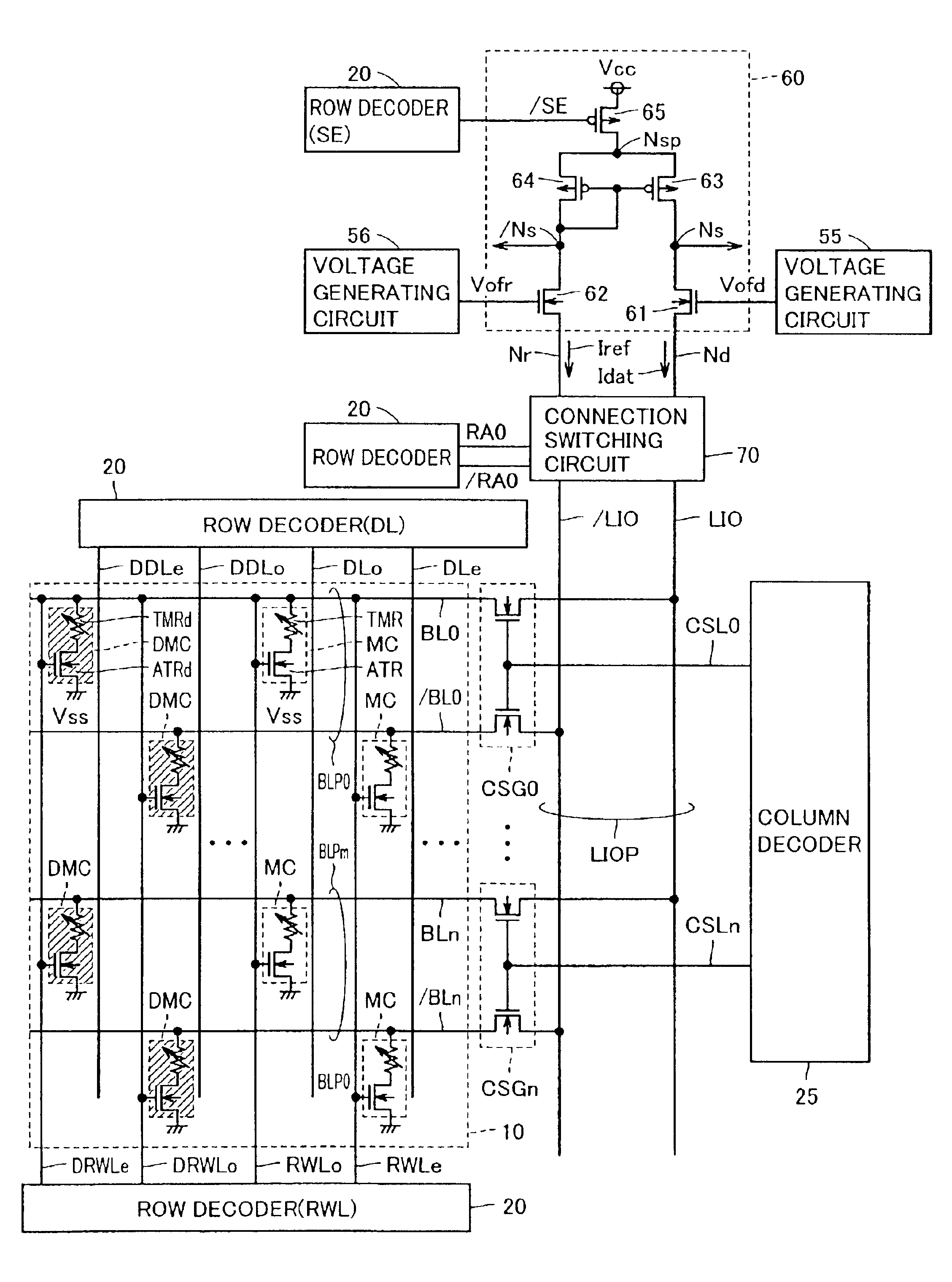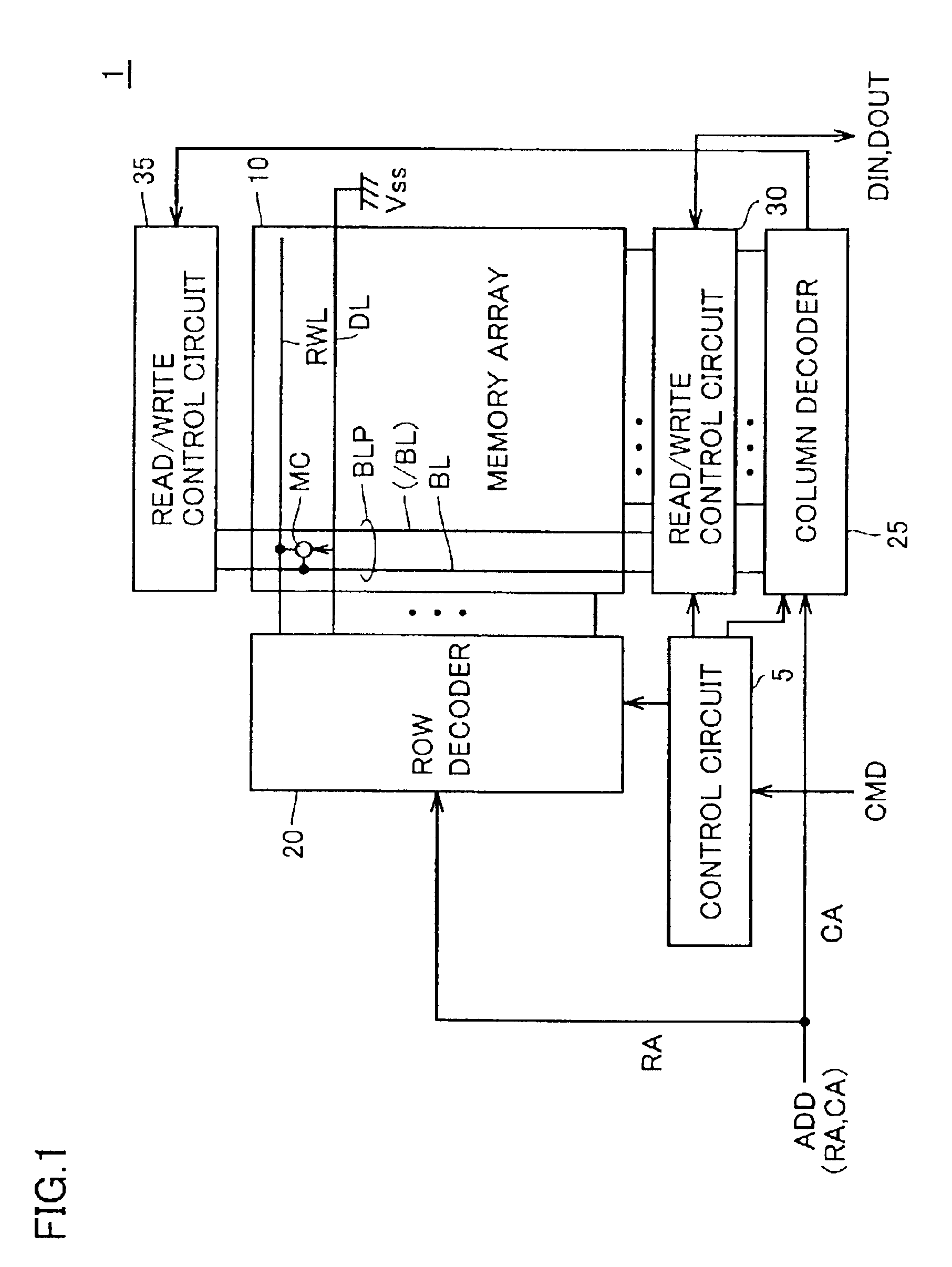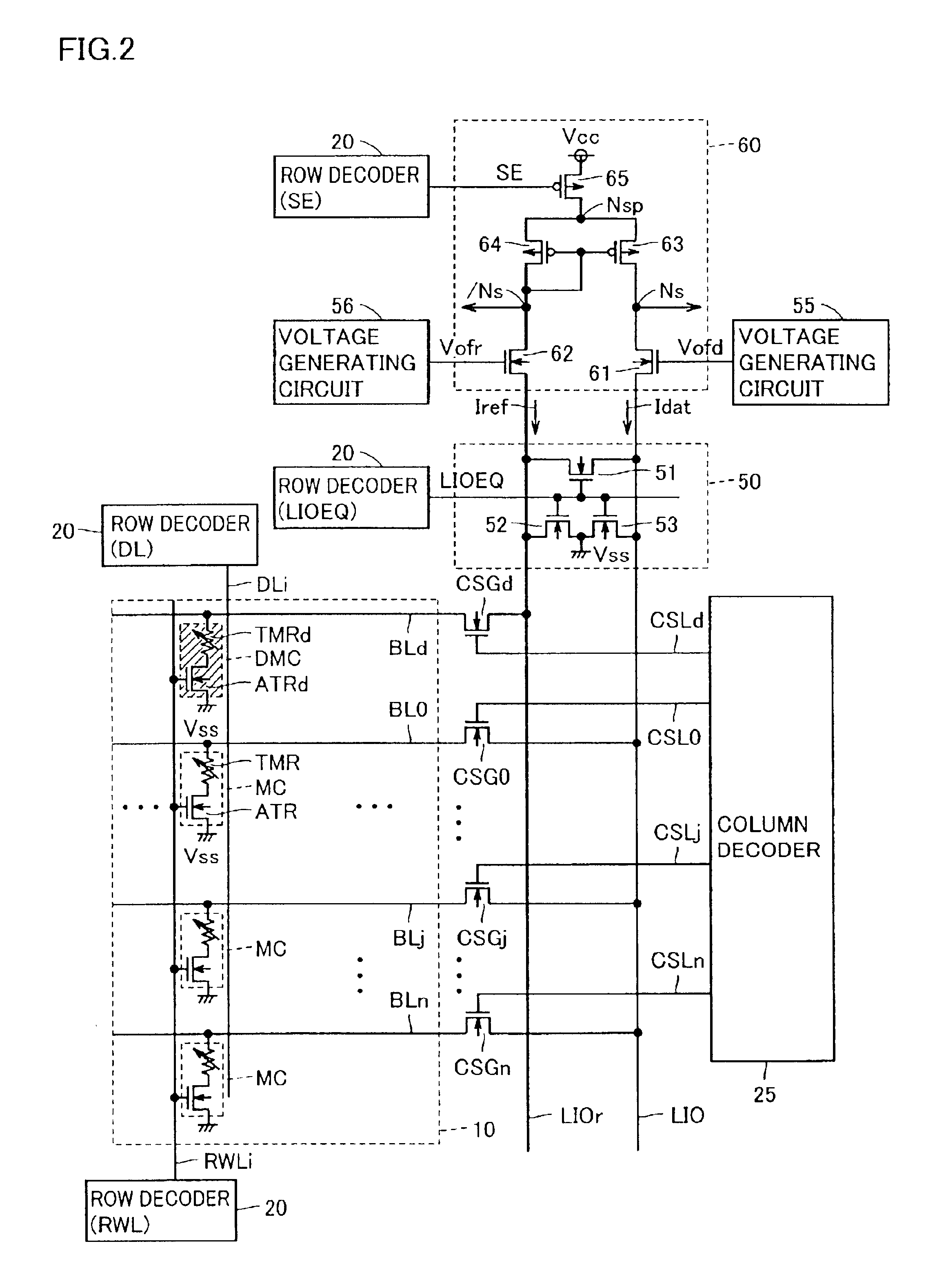Thin film magnetic memory device provided with a dummy cell for data read reference
- Summary
- Abstract
- Description
- Claims
- Application Information
AI Technical Summary
Benefits of technology
Problems solved by technology
Method used
Image
Examples
first embodiment
[0078
[0079]Referring to FIG. 1, an MRAM device 1 according to a first embodiment of the invention executes random access in response to a control signal CMD and an address signal ADD, which are externally applied, and executes input of write data DIN and output of read data DOUT.
[0080]MRAM device 1 includes a control circuit 5 for controlling a whole operation of MRAM device 1 in response to control signal CMD, and a memory array 10 having a plurality of MTJ memory cells arranged in rows and columns.
[0081]In memory array 10, a read word line RWL and a digit line DL are arranged corresponding to each row of the MTJ memory cells, and a bit line BL is arranged corresponding to each column of the MTJ memory cells. Alternatively, a bit line pair BLP formed of bit lines BL and / BL may be arranged corresponding to each memory cell column for providing a folded bit line structure. FIG. 1 representatively shows one MTJ memory cell MC as well as an arrangement of read word line RWL, digit lin...
second embodiment
[0156
[0157]A second embodiment will now be described in connection with a structure for providing an offset, which is similar to that in the first embodiment, in a structure provided with differential amplifiers in two stages.
[0158]Referring to FIG. 9, a structure according to the second embodiment further includes a global differential amplifier 80 arranged subsequently to differential amplifier 60. Global differential amplifier 80 converts the voltage difference between sense nodes Ns and / Ns into a passing current difference between complementary global data lines GIO and / GIO, and amplifies this current difference to produce a voltage difference between global sense nodes Ngs and / Ngs.
[0159]Differential amplifier 60 is provided for memory array 10 having the structure shown in FIG. 2. In the data read operation, therefore, data line LIO electrically coupled to sense node Ns is connected in series to the selected memory cell, and data line LIOr electrically coupled to sense node ...
third embodiment
[0192
[0193]A third embodiment will now be described in connection with another example of the structure, in which data reading is performed by using dummy cells having substantially the same structures as the normal memory cells.
[0194]FIG. 13 is a circuit diagram showing a structure of a data read circuit system according to the third embodiment.
[0195]Referring to FIG. 13, memory array 10 has substantially the same structure as that shown in FIG. 4, and therefore, description thereof is not repeated. FIG. 13 representatively shows read word line RWLe, digit line DLe, bit lines BL0 and / BL0, and normal memory cells corresponding to one even-numbered row and the first memory cell column as well as dummy cell DMC, dummy read word line DRWLe and dummy digit line DDLe corresponding to them.
[0196]Data line pair / IOP formed of data lines LIO and / LIO is connected to memory array 10 in the same manner as those in FIG. 4, and therefore, description of the connection relationship between them ...
PUM
 Login to View More
Login to View More Abstract
Description
Claims
Application Information
 Login to View More
Login to View More - R&D
- Intellectual Property
- Life Sciences
- Materials
- Tech Scout
- Unparalleled Data Quality
- Higher Quality Content
- 60% Fewer Hallucinations
Browse by: Latest US Patents, China's latest patents, Technical Efficacy Thesaurus, Application Domain, Technology Topic, Popular Technical Reports.
© 2025 PatSnap. All rights reserved.Legal|Privacy policy|Modern Slavery Act Transparency Statement|Sitemap|About US| Contact US: help@patsnap.com



